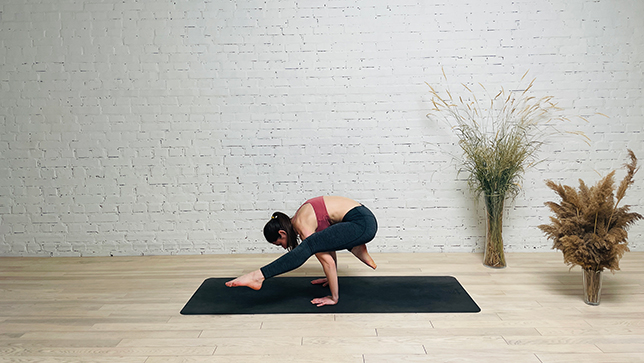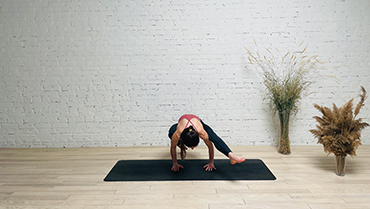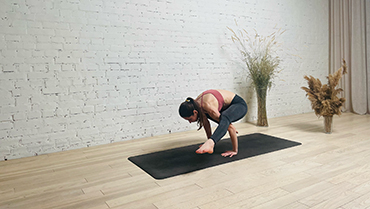One Legged Crane Pose II - Eka Pada Bakasana II

Contents
One-legged Crane Pose II, also known as Eka Pada Bakasana II, is an arm-balancing yoga pose. Being an advanced variation of Bakasana, or Crane Pose, One-legged Crane Pose II is a great pose for more experienced practitioners, as well as those who are just beginning to work on arm balances. It’s wonderful for igniting your core, improving the stability and mobility in your legs, hips, shoulders, and spine, as well as elongating and stretching the muscles of the back of the body.
Pose Detail
- Difficulty: Advanced
- By Type: Arm Balance Yoga Poses, Balancing Yoga Poses, Strengthening Yoga Poses
- Body Position: Inversion Yoga Poses
Step-by-Step Instructions
Benefits and Contraindications
Improve balance and concentration.
Strengthens forearms, wrists, shoulders, upper back and abdominal muscles.
Stretches the upper back.
Improves concentration.
Shoulder injury
Wrist injury or condition such as carpal tunnel syndrome
High blood pressure
Pregnancy
Migraine
Photo poses in different angles


Modifications, Props & Tips
Eka Pada Bakasana II (One-legged Crane Pose II) requires flexibility in your hips and length in your hamstrings. The forward bends, with facilitated stretches of your hamstrings and gluteals, help to prepare for this.
Notice how the various components of the pose interact with each other. For example, your both hips flex and one knee straightens while the other is bent. The position of your straight leg is similar to Tortoise Pose (Kurmasana), and the combination of your both legs is like One Leg Folded Forward Bend Pose (Trianga Mukhaikapada Paschimottanasana).
Similar to Kurmasana, your straight leg is drawn in against your upper arm, or even your shoulder, creating balance and stability. Your straight-leg thigh braces the shoulder while stretching the muscles at the back of your leg and your buttocks. This position strengthens your quadriceps, which then provides feedback through reciprocal inhibition to relax your hamstrings. At the same time, the center of gravity shifts slightly forward and to your straight-leg side, projecting outside the confines of your body.
Imagine an axis of rotation at the center of your chest and balance your body around it. Squeeze your thighs toward your arms, and co-activate your straight-leg quadriceps and bent-leg hamstrings. Engage Mula bandha to contract your pubococcygeus muscle and nutate your sacrum. Combine this with engaging the abdominals to tuck the tailbone under. This can be used to counterbalance the forward momentum of your body. Once you attain stability, engage your triceps and chest muscles to lift your torso upwards.